No, not the terror of the schoolyard, but the Wedge-tailed Shearwater, Puffinus pacificus. The species ranges widely across the Pacific, as its scientific name suggests, from the Revillagigedo Islands off Mexico to the Japanese Bonin Islands to New South Wales in Australia. But it also occurs in the Indian Ocean, from Aldabra near Madagascar to Western Australia. The species breeds on an extraordinary number of islands, and has a worldwide population of perhaps over five million birds, and this is in spite of declines due to hunting, persecution and introduced species. I first encountered the Wedgie while working on Tern island in French Frigate Shoals, an amazing location to get a whole armful of seabirds (albeit not much else birdwise). They are described as usually nocturnal in Brooke’s Albatrosses and Petrels of the World, but on Tern Island they can easily be seen lounging the day away on the surface. So easily in fact that when planes come to land they, along with the other birds, must be flushed up and away lest they do themselves and the planes an injury.
Coming to join the general loafing on the runway
A close up of a pair. Pairs would often sing, and an ungodly sound it was too! Wedge-tailed_Shearwater07_audio by Tom Tarrant
This guy was puzzled but generally unconcerned when I lay down to take a few shots.
In the air you can see the wedged tail that gives the species its name.
Wedge-tailed Shearwaters generally occur as one of two morphs, a pale morph (like the one pictured above) and a darker morph. At Tern Island the darker morph was much rarer, indeed the paler morph is by far the most common morph in te Pacfic, except in Mexico where the ration is two to one pale to dark. Birds in the southern Pacific and Indian Oceans are predominately dark, however.
Pale and dark morph side-by side.
Intermediate birds can also occur, like this one.
Not another dark morph, but the related Christmas Shearwater (Puffinus nativitatis). This shares the island with the Wedge-tailed Shearwater but can be separated by its smaller overall size and dark chocolate brown plumage. Another difference is that the Christmas Shearwater is a surface breeder whereas the Wedgie breeds in burrows. I’ll do a post on this special little shearwater later on.
Shearwaters are not as accomplished on land as albatrosses and giant petrels, but they can walk.
Wedge-tailed Shearwaters nest in holes dug into the sandy soil. Here a bunch of them are investigating one such burrow.
Because they are burrow-nesters we didn’t often see the chicks, but this nest was under the house where we could take a photo. Just a few days old!
…
If you liked this post and want to see more great images of birds make sure to check out 10,000 Clicks, our big (and growing) page of galleries here at 10,000 Birds.

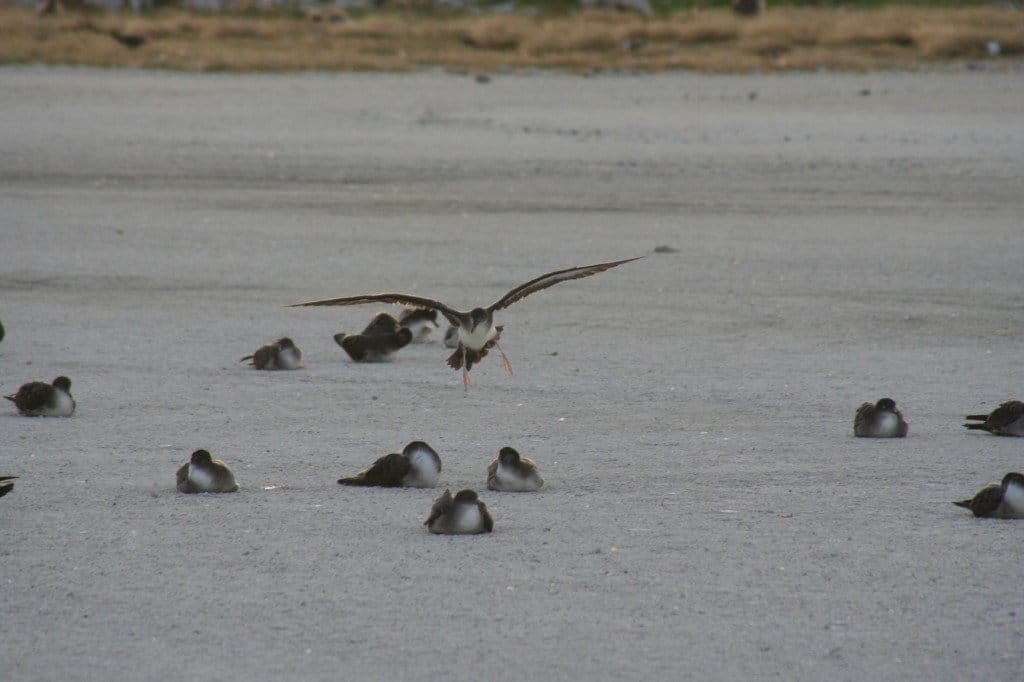
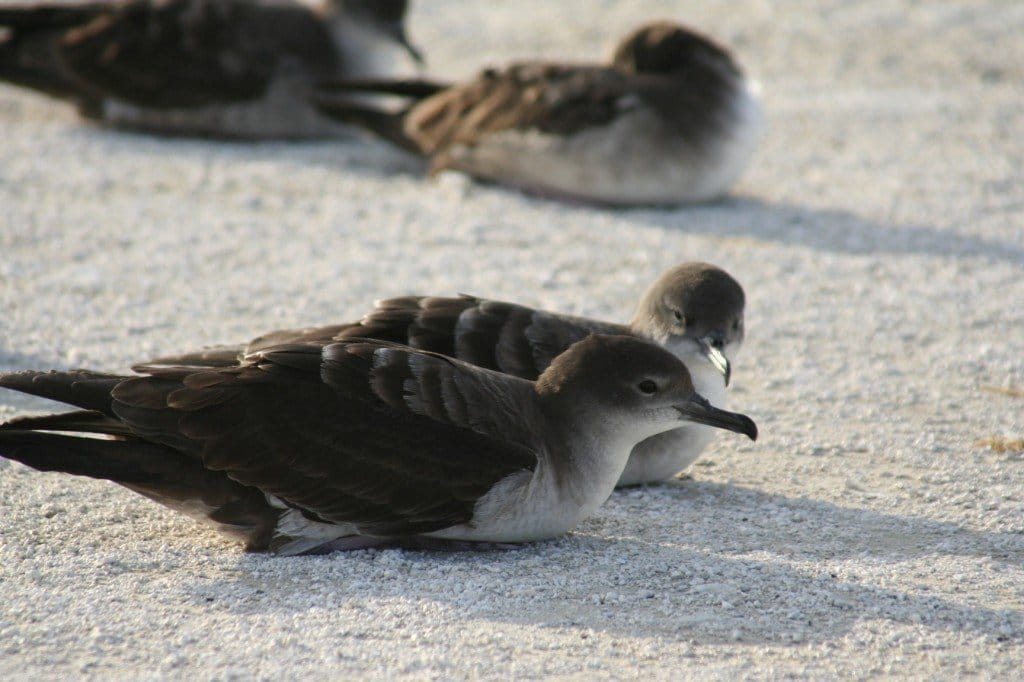
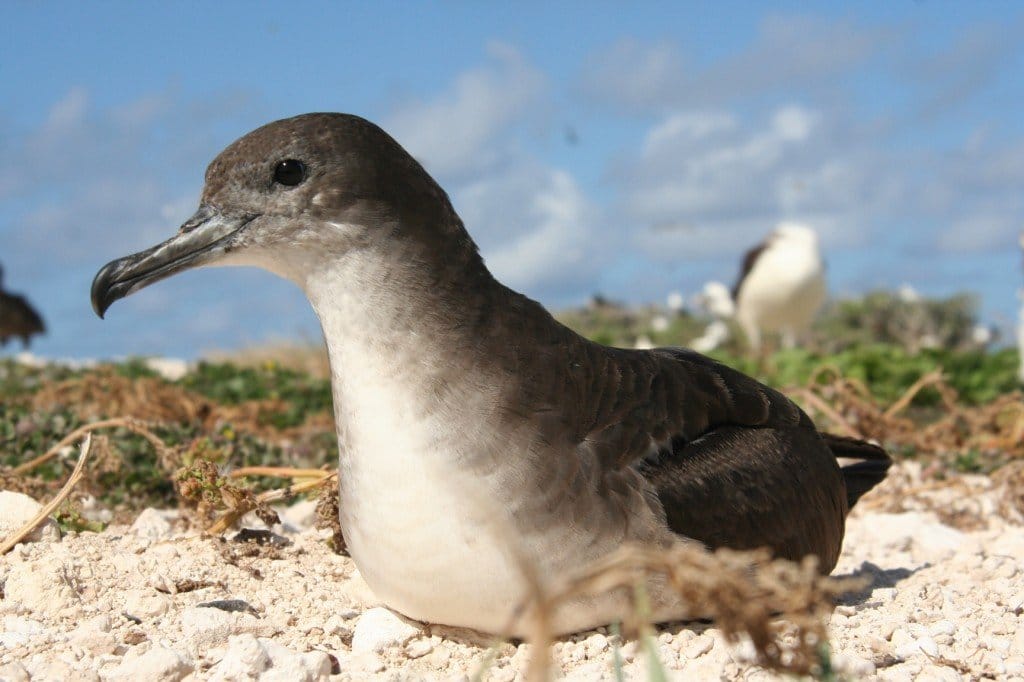
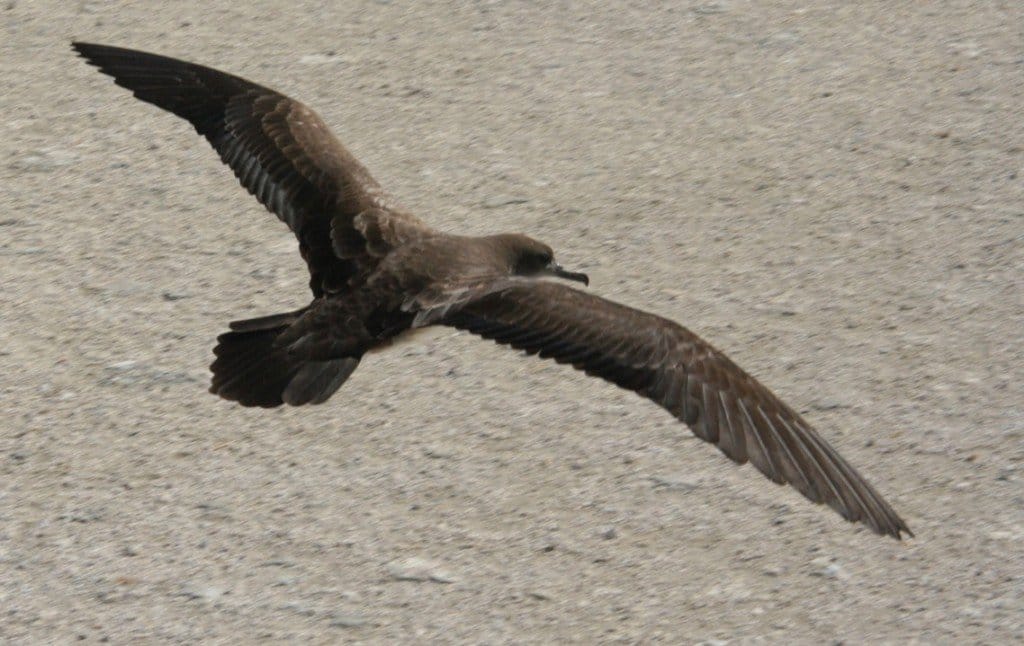
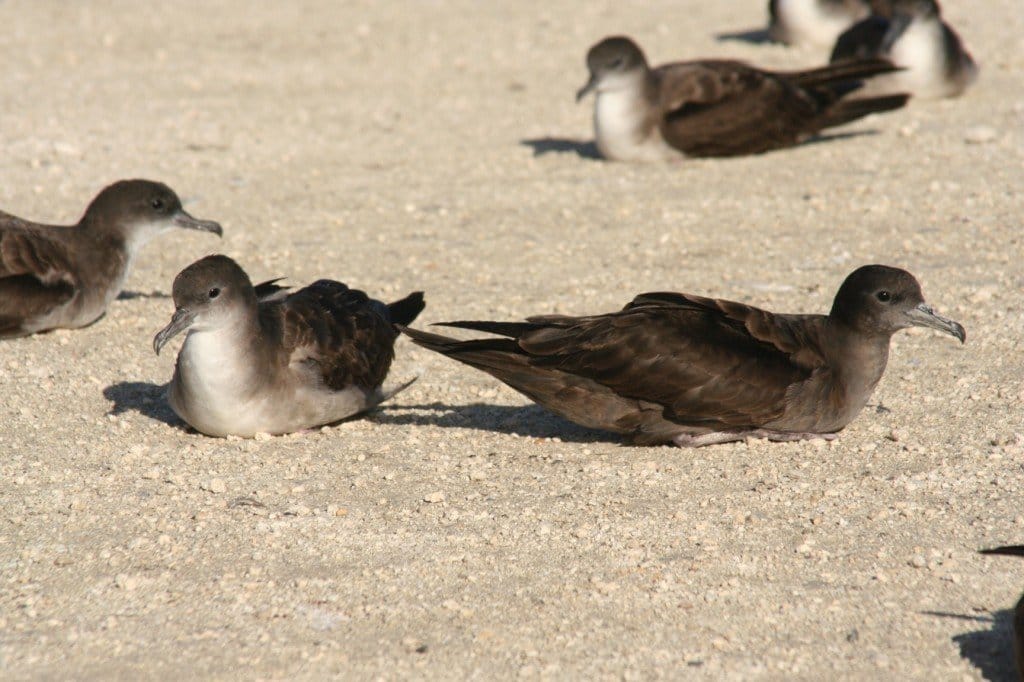
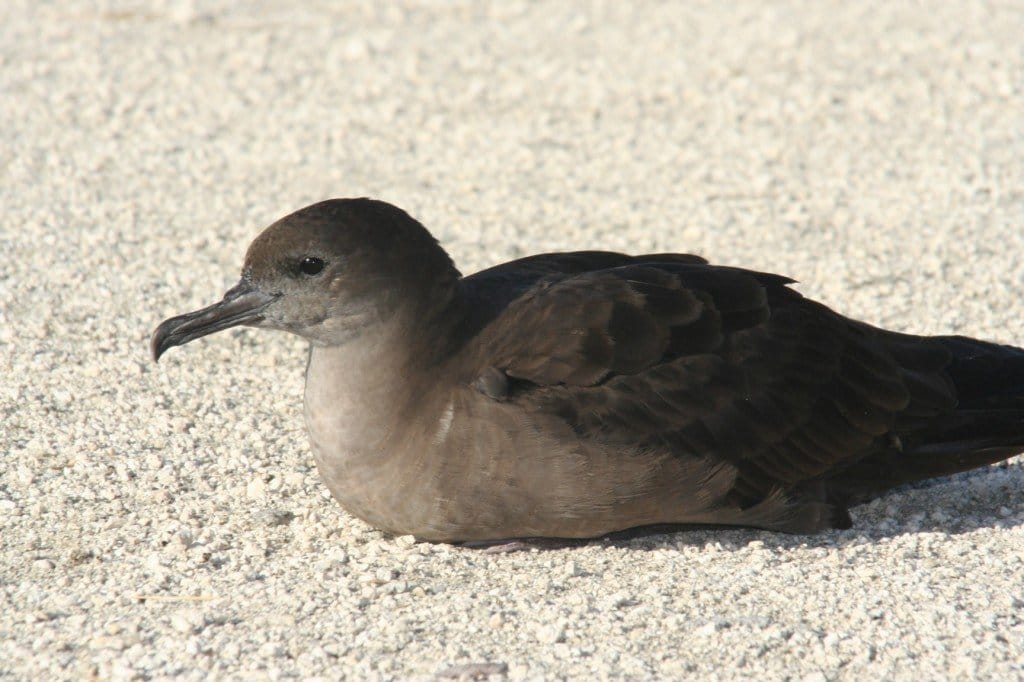
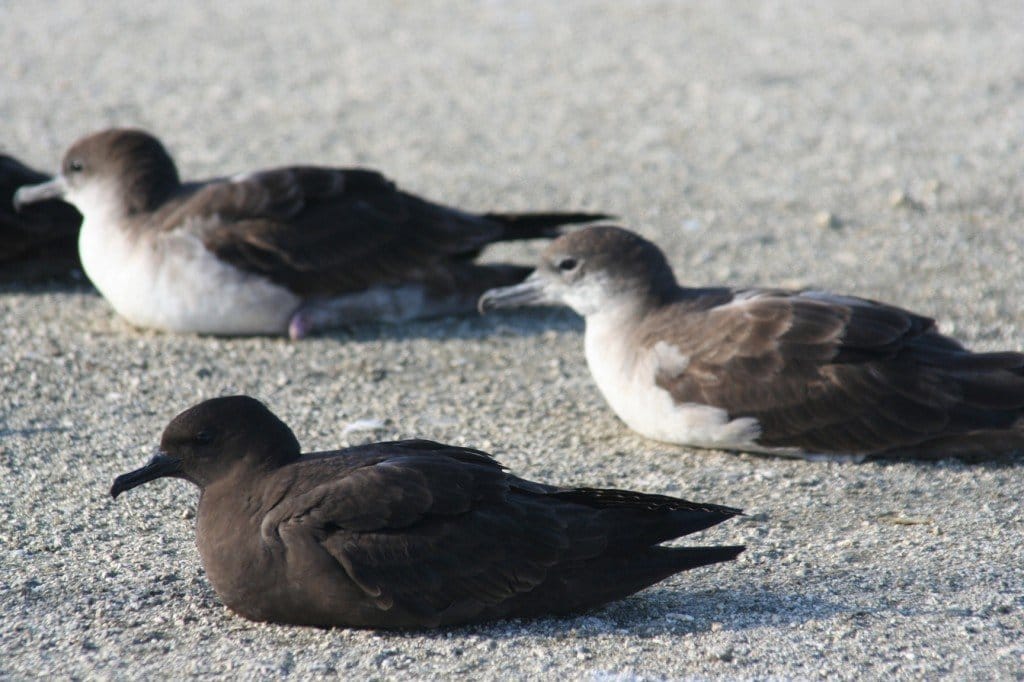
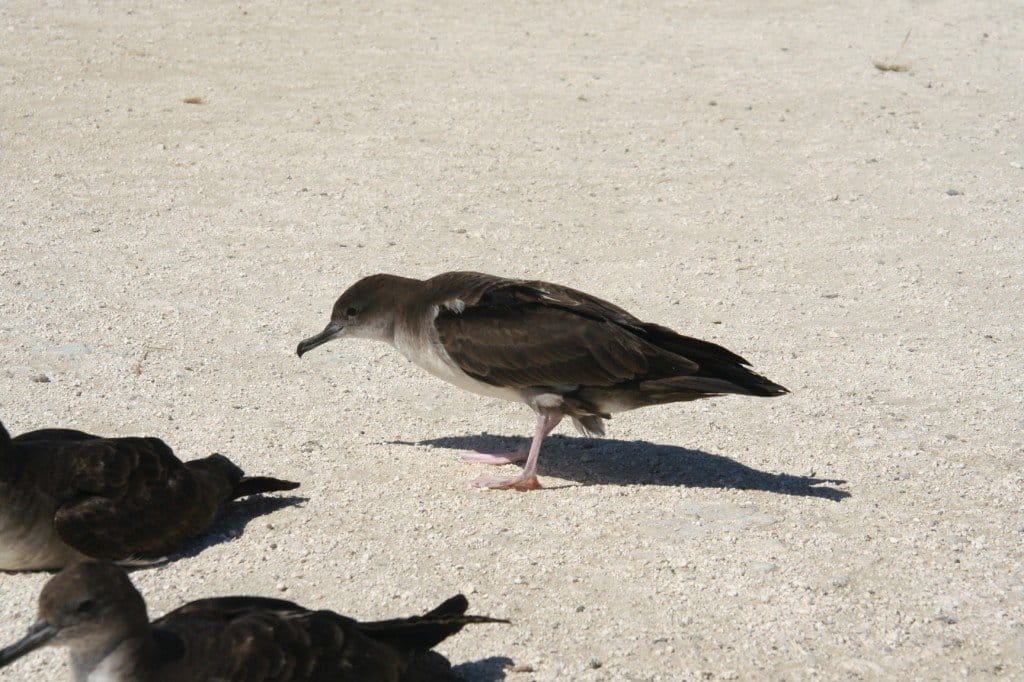
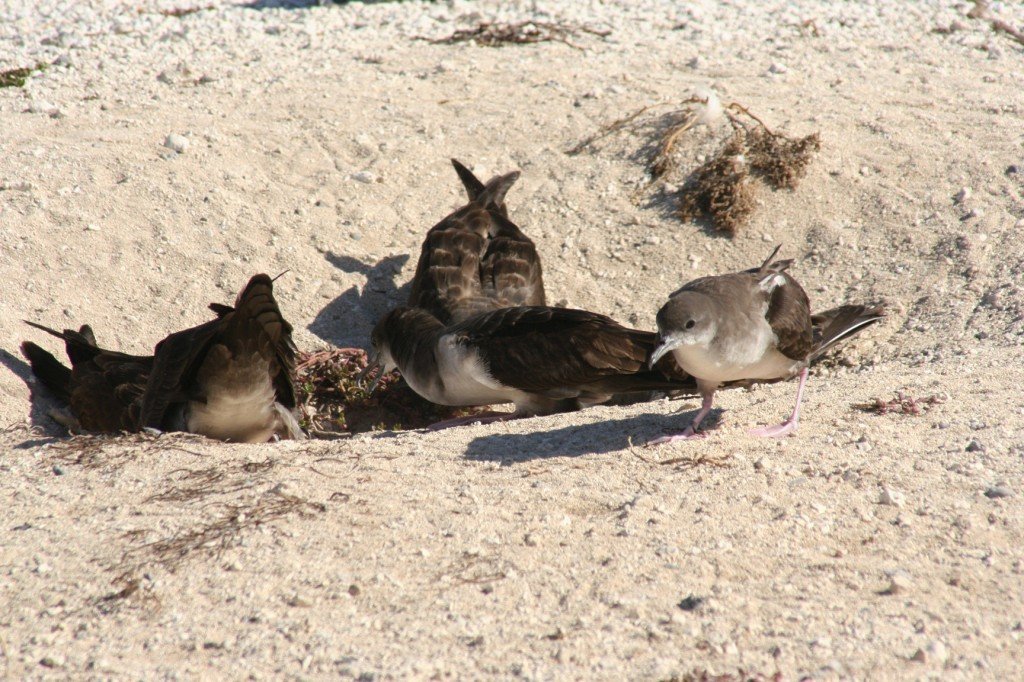
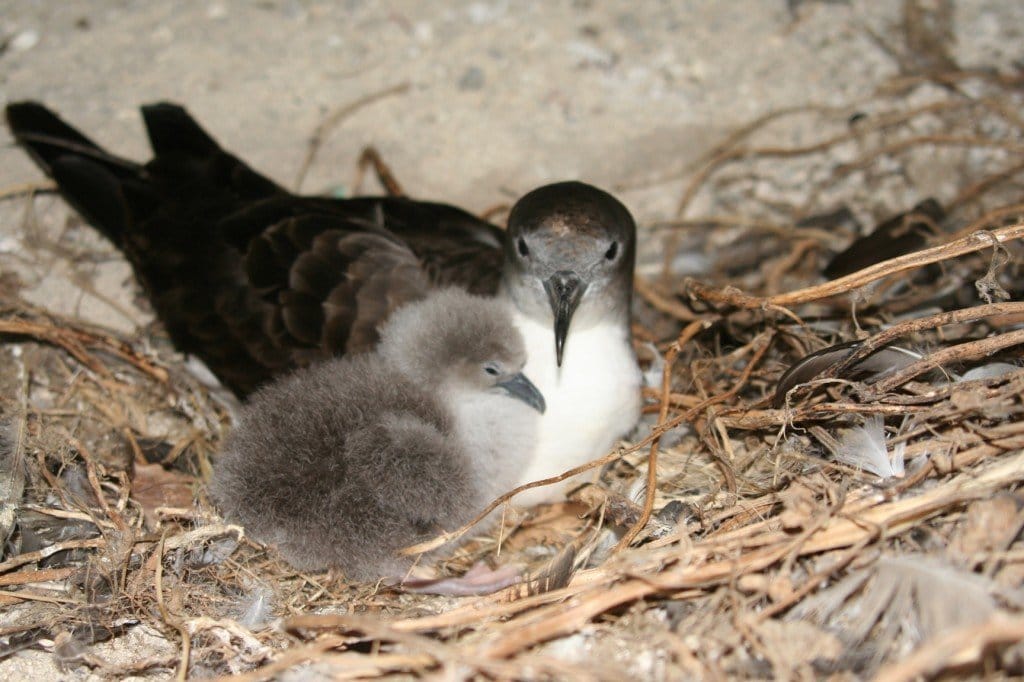










Seen at Waitangi golf club, North Island New Zealand on 16th Oct ’11 a mottled white and black bird, about the size of a Tui,yellow hooked beak, black central eye with yellow outer ring. couldn’t see the feet.
Pretty certain I saw one of these last year in Kerikeri.
Can’t find anything to match this in NZ & Australian books ??
Sounds like a lost Oriental Cuckoo.
No it wasn’t that. I’ll keep searching. Let me know of any other ideas.
Arnold
HI, Duncan
I coordinate the Plastic Bag Free Queensland campaign, and I am looking for an image to illustrate an article I’m writing about the impact of plastic marine debris on wedge-tailed shearwaters… Could you please email me on plasticbagfreeqldATqccqldDOTorgDOTau regarding your pic of an adult and chick on this page?
Kind regards
Caroline